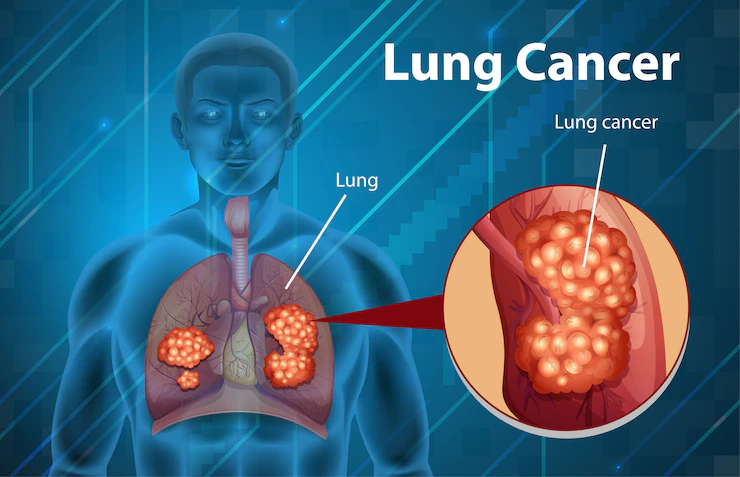Lung Cancer in Delhi

Lung cancer is one of the most common and serious types of cancer that begins in the lungs — the two spongy organs in the chest responsible for breathing. It usually develops in the lining of the air passages and can spread to nearby tissues and other parts of the body. There are two main types: non-small cell lung cancer (NSCLC), which is more common and grows more slowly, and small cell lung cancer (SCLC), which tends to grow and spread faster. The primary cause of lung cancer is smoking, which contributes to the majority of cases. However, non-smokers can also develop lung cancer due to exposure to secondhand smoke, environmental pollutants, radon gas, asbestos, and a family history of the disease. Symptoms often include a persistent cough, chest pain, coughing up blood, shortness of breath, hoarseness, and unexplained weight loss. Unfortunately, lung cancer is often diagnosed at a later stage when symptoms become more noticeable. Early detection through screenings like low-dose CT scans can improve treatment outcomes. Treatment options vary depending on the type and stage of the cancer and may include surgery, radiation therapy, chemotherapy, targeted therapy, or immunotherapy. Lifestyle changes, such as quitting smoking and maintaining a healthy diet, can reduce the risk and improve quality of life during treatment. Ongoing research continues to improve outcomes and survival rates for patients diagnosed with lung cancer.
Causes and Risk Factors
- Smoking:
The primary cause of lung cancer. The risk increases with the number of cigarettes smoked per day and the number of years you have smoked. - Secondhand Smoke Exposure:
Non-smokers who are regularly exposed to tobacco smoke are also at an increased risk. - Exposure to Radon Gas:
A naturally occurring radioactive gas that can build up in homes, especially in basements and poorly ventilated areas. - Asbestos and Other Carcinogens:
Long-term exposure to asbestos fibers, arsenic, chromium, and diesel exhaust can significantly raise the risk. - Air Pollution:
Prolonged exposure to heavily polluted air, particularly in industrial and urban areas, has been linked to lung cancer. - Family History and Genetics:
If a close family member has had lung cancer, your risk may be higher, possibly due to shared genes or environmental factors.
Symptoms of Lung Cancer
- A persistent, worsening cough that doesn't go away.
- Chest pain that becomes worse with deep breathing, coughing, or laughing.
- Coughing up blood or rust-colored sputum.
- Shortness of breath and wheezing.
- Hoarseness or changes in voice.
- Unexplained weight loss and fatigue.
- Recurring infections like bronchitis or pneumonia.
- Swelling in the face or neck (in advanced stages).
Diagnosis of Lung Cancer
- Imaging Tests: Chest X-rays, CT scans, and PET scans help detect tumors and determine the extent of spread.
- Biopsy: A sample of lung tissue is taken and examined under a microscope to confirm cancer and identify the type.
- Sputum Cytology: Examining mucus (sputum) from the lungs can sometimes reveal the presence of cancer cells.
- Bronchoscopy: A thin, flexible tube is inserted into the lungs to examine airways and collect tissue samples.
Treatment Options
- Surgery: Involves removing the tumor and a portion of the lung or the entire lung depending on the stage and location.
- Radiation Therapy: High-energy rays are used to kill cancer cells and shrink tumors.
- Chemotherapy: Powerful drugs are administered to destroy cancer cells or stop their growth. It may be used alone or in combination with other treatments.
- Targeted Therapy: Focuses on specific mutations within cancer cells, minimizing damage to normal cells.
- Immunotherapy: Boosts the body's immune system to recognize and fight cancer more effectively.

 Breast Cancer
Breast Cancer Lung Cancer
Lung Cancer Smoking Cancer
Smoking Cancer Mouth Cancer
Mouth Cancer